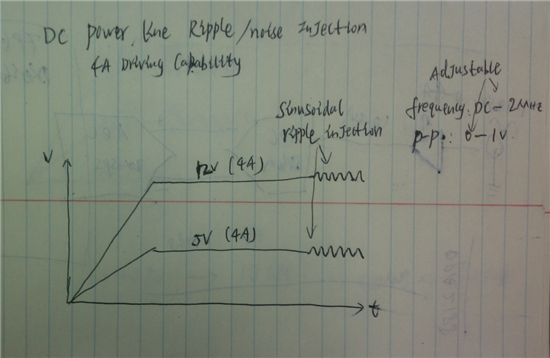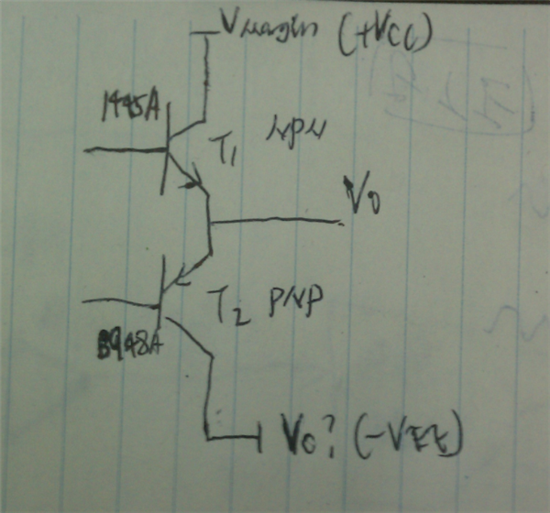Dear All,
I encounter a technical difficulty on how to inject sinusoidal ripple/noise into DC power line. The design requirement is let's say I have 12V DC or 5V DC power line, each power line has 4A driving capability. I need to inject sinusoidal waveform with adjustable frequency and peak to peak voltage into these 12V and 5V power line to simulation power line ripple/noise situation. Sinusoidal waveform can be easily derived from DDS (Digital Signal Synthesizer), but signal output from DDS is relative low in power and voltage level. How to inject such Sinusoidal waveform into power line is big challenge to me. Some people says maybe I can use PNP and NPN Power Transistor pair to build a power amplifier but I am not sure how to properly use discrete transistors to build such power amplifier.
Any body has experience or idea on how to do this? Thanks. Please refer to below picture for illustration on what I am trying to do (I hand drawing on a paper).
Ripple/Noise Injection illustration
PNP NPN pair amplifier




